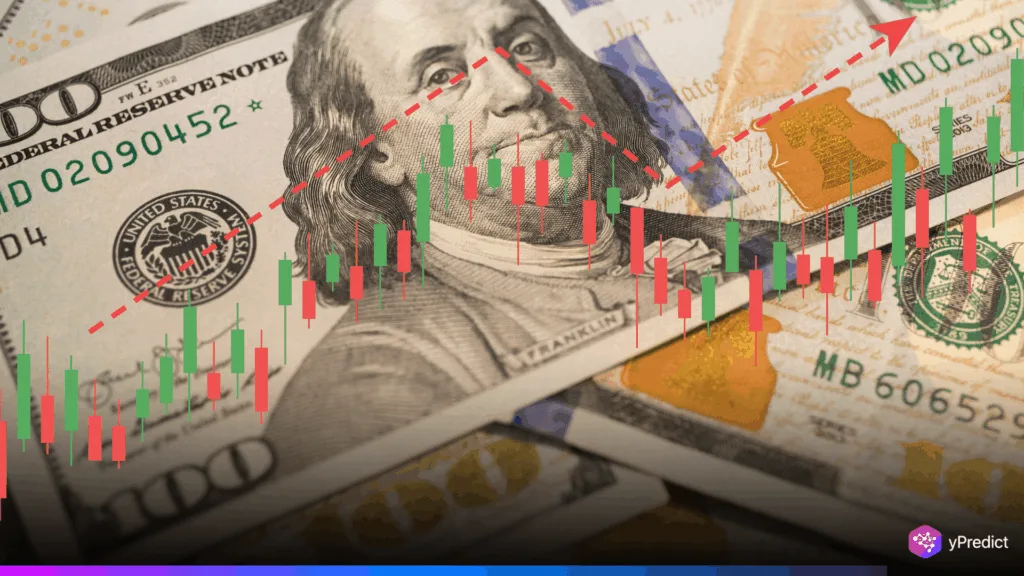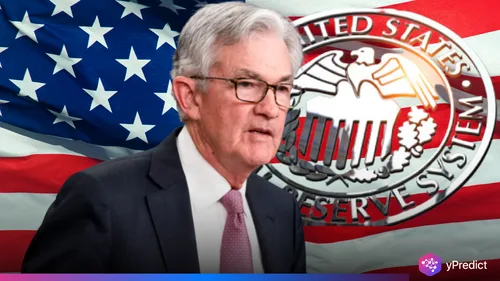
The US dollar stayed flat in early Wednesday trading as investors anticipated the Federal Reserve’s imminent policy decision. While markets expected interest rates to remain steady, attention moved to any indications from the Fed regarding future monetary tightening.
Meanwhile, major Asian currencies remained mostly stable, recovering from recent volatility as traders approached the announcement with caution due to persistent inflation concerns and fluctuating rate outlooks.
Fed Decision Anticipation Keeps Markets in Check
Global markets took a cautious stance on Wednesday as investors awaited the U.S. Federal Reserve’s upcoming policy decision. The central bank is widely expected to maintain interest rates between 5.25% and 5.5%, but focus remains on its future outlook.
Investor sentiment suggests a pause in the rate-hiking cycle, though the Fed may signal readiness to act if inflation remains elevated. A senior MUFG strategist described the anticipated approach as a “hawkish hold,” indicating the Fed’s commitment to price stability while keeping tightening options open.
The US Dollar Index (DXY), which tracks the dollar against a basket of six major currencies, was hovering around 105.05 in early trade, indicating little movement following three days of small falls. The dollar’s weak performance underscores market uncertainty, with investors looking for Powell’s post-meeting comments for more guidance on future policy.
In equities, U.S. stock futures rose after Treasury Secretary Scott Bessent and senior trade official Jamieson Greer announced plans to meet with China’s leading economic policy maker this weekend. President Trump has hinted that multiple trade agreements could be announced in the coming days.
Meanwhile, dollar outflows have stabilized after recent sell-offs, as investors in lower-yielding emerging markets adjust their portfolios or repatriate assets. Renewed optimism over the U.S. and China diplomatic engagement has helped alleviate concerns about escalating trade tensions between the world’s two largest economies.
Senior officials from both countries will meet in Switzerland on Saturday, a move widely viewed as a positive step toward de-escalation.
Asian Currencies Show Resilience Amid Global Caution
Asian currency markets stayed active, with Taiwan’s dollar falling 0.65% after a recent 10% rally sparked by U.S. tariff announcements. That surge had lifted other regional currencies like the Singapore dollar and Korean won, which briefly hit a six-month high before retreating. The Chinese yuan weakened following Beijing’s widely anticipated rate cut, adding further pressure to regional currency movements in the short term.
In Europe, the euro dipped 0.2% to $1.1340 after prior gains tied to Friedrich Merz’s election as Germany’s new chancellor. The U.S. Dollar Index remained flat, reflecting investor caution ahead of the Federal Reserve’s much-anticipated policy announcement this week. Market opinions on the Fed’s next move remain divided; some expect rate cuts by July, while others predict inflation will delay any easing.
In South Asia, the USD/INR pair climbed despite support for the Indian Rupee from strong domestic assets and reduced export reliance. Lower crude prices, driven by OPEC+ supply and weak U.S. growth, also provided support to India’s currency during recent trading sessions. India’s inflation dropped to a five-year low in March, staying well below the RBI’s 4% target and prompting a shift in policy.
Conclusion
As the Federal Reserve’s policy decision nears, global markets remain cautious, with the U.S. dollar stable and Asian currencies showing notable resilience. Although no immediate rate change is expected, investors are closely watching the Fed’s forward guidance for signals on global monetary policy direction. Traders believe the Fed’s tone, more than the actual decision, will influence short-term currency movements and broader financial market sentiment.







